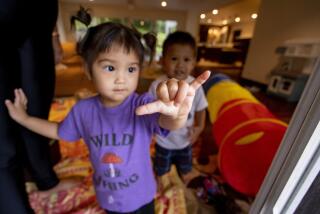George Na’ope dies at 81; guardian of native Hawaiian culture
George Na’ope, a guardian of native Hawaiian culture who taught traditional hula dance and chanting to generations of students and introduced the ancient art forms to new audiences, has died. He was 81.
Na’ope, who in 2006 was honored with a National Heritage Fellowship award by the National Endowment for the Arts, died Oct. 26 at his home in Hilo, Hawaii, after battling cancer. His death was announced by the Office of Hawaiian Affairs.
Na’ope (pronounced nah-OH-peh) co-founded the Merrie Monarch Festival, a celebration of hula held annually since the early 1960s in Hilo on the Big Island of Hawaii. The festival honors King David Kalakaua, dubbed the Merrie Monarch, who encouraged a renaissance of native culture during his reign from 1874 to 1891, when the Hawaiian Islands were an independent nation. For many years “Uncle George” Na’ope and Dorothy “Auntie Dottie” Thompson ran the event together, shaping it into the world’s premier hula competition.
Revered as a kumu hula (hula master), Na’ope also was considered an expert in traditional chants, the oral history of the South Pacific islanders who settled Hawaii.
“In the ancient hula and in all of our chants are the history of Hawaii,” Na’ope said in an interview with the NEA in 2006. “Many of the chants are not in books -- they were handed down from generation to generation. We’ve tried to preserve all of that so that our youngsters today will know how our people lived in the days of their forefathers and our forefathers.”
He was born George Lanakilakekiahiali’i Na’ope in Kalihi on Oahu on Feb. 25, 1928, and raised in Hilo. His father was a merchant seaman, and his great-grandmother, Malia Na’ope, was a hula master who began teaching him the traditional dance when he was 3. He also studied the flowing, pantomimic dance form under two other noted instructors, Iolani Luahine and “Mama” Fuji.
While absorbing ancient dance and chanting, Na’ope also became proficient on the ukulele. In the 1950s, as a member of the Ray Kinney Orchestra, he sang, danced and played popular Hawaiian tunes for the tourists streaming across the Pacific from the Mainland.
He began teaching traditional hula in the 1940s and led a revival of male hula, which is now a featured part of the Merrie Monarch Festival. He traveled around the world putting on hula demonstrations and leading students in the traditional steps.
But Na’ope seemed most comfortable at home on the Big Island, where he had a sliding scale of instructional fees. According to a 1999 Honolulu Star-Bulletin profile, he charged $3 for hula lessons but accepted alternative forms of payment.
“Bananas and papayas and ulu and potatoes -- that’s the kind of money I get paid in,” he said with a chuckle.
Known as a natty dresser with a penchant for rings on every finger, Na’ope could be a stern teacher who demanded excellence from his students.
“We must remember who we are and that our culture must survive in this modern world,” Na’ope said in the NEA interview. “ . . . Teach it and share it and not hide it. I tell the young people to learn the culture and learn it well, preserve it so their children and their children’s children can continue with our culture and that our culture will live forever.”
Survivors include a brother and three sisters.
More to Read
The biggest entertainment stories
Get our big stories about Hollywood, film, television, music, arts, culture and more right in your inbox as soon as they publish.
You may occasionally receive promotional content from the Los Angeles Times.






